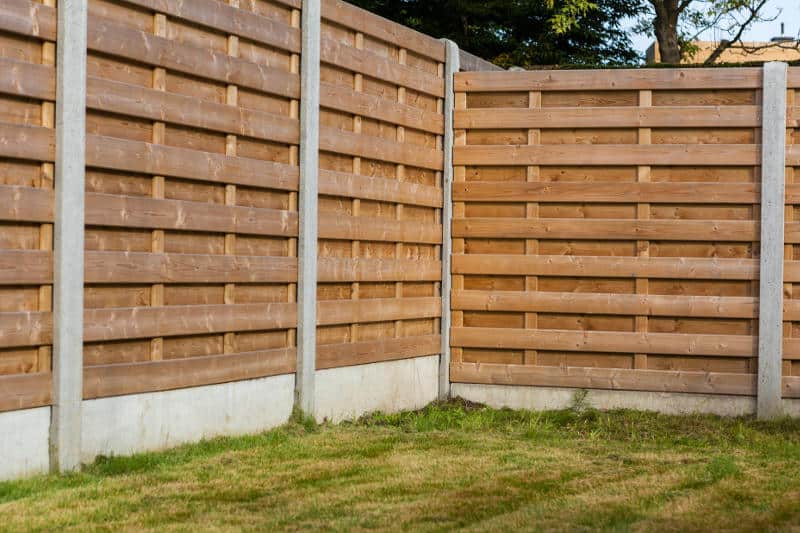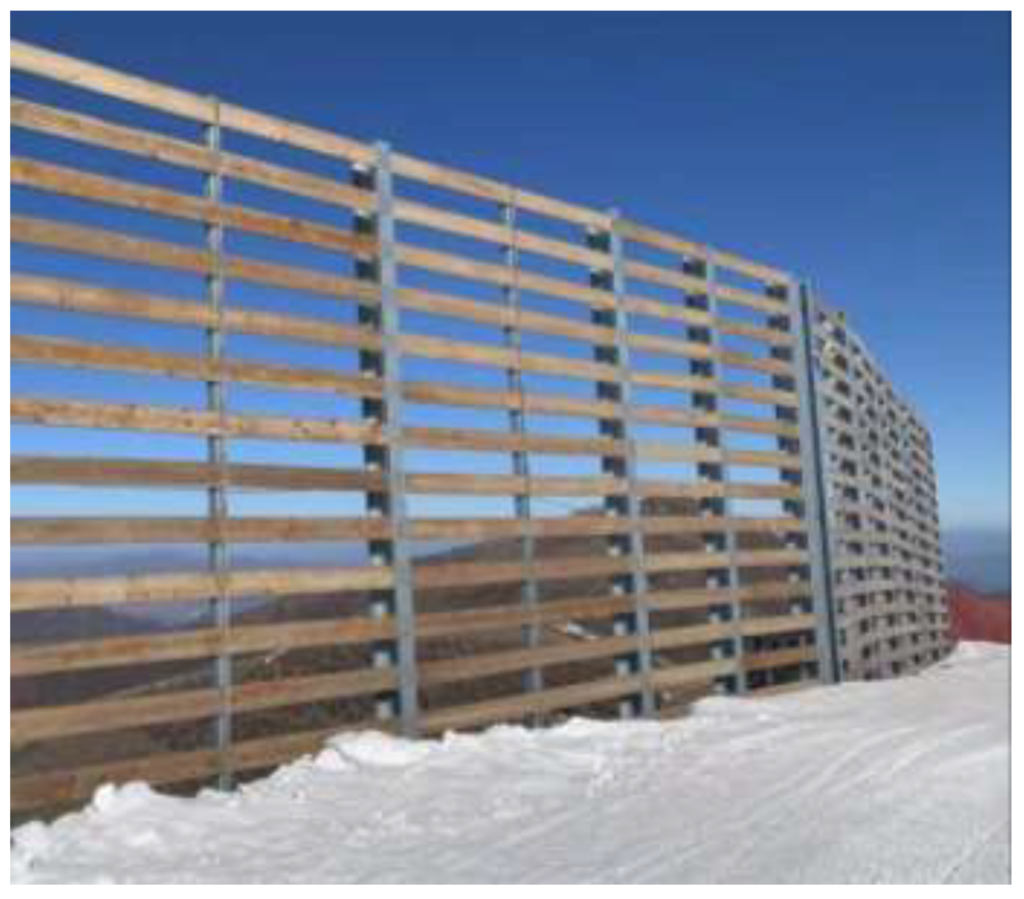When it comes to outdoor noise pollution, fences can have a significant impact. As the owner of the blog website “FenceDude.com,” you are dedicated to providing comprehensive and engaging content about fences to educate and guide your audience. From exploring the different fence types, sizes, materials, and shapes to discussing their suitability for specific needs, your goal is to offer valuable knowledge to help readers make informed decisions. Through your blog posts, you aim to cover the benefits, considerations, maintenance requirements, and aesthetic appeal of various fence types. By addressing the importance of choosing the appropriate size and shape based on specific requirements, you hope to provide practical advice that resonates with your audience. Ultimately, your goal is for your blog to become the go-to resource for all things related to fences.

The Impact of Fences on Outdoor Noise Pollution
1. Introduction
Fences are a common feature in outdoor spaces, serving various purposes such as enhancing privacy, providing security, and defining boundaries. However, one aspect that is often overlooked is their potential role in reducing outdoor noise pollution. In this article, we will explore the effects of outdoor noise pollution, the principles of noise reduction, and how fences can contribute to minimizing noise disturbances. We will also discuss different types of fences suitable for noise reduction, the acoustic properties of various fence materials, and the impact of fence height, placement, and configuration on noise reduction. Additionally, we will explore additional noise reduction techniques and provide case studies highlighting the impact of fences on noise pollution.
2. Effects of Outdoor Noise Pollution
2.1 Physiological Effects
Outdoor noise pollution can have various physiological effects on human health. Prolonged exposure to high noise levels can lead to elevated blood pressure, increased heart rate, and stress hormone secretion. It can also result in sleep disturbances and decreased quality of sleep, leading to fatigue and reduced productivity.
2.2 Psychological Effects
Noise pollution can also have significant psychological implications. It can cause annoyance, irritability, and difficulty concentrating, leading to increased levels of frustration and decreased overall well-being. Continuous exposure to noise can also contribute to the development of mental health issues such as anxiety and depression.
2.3 Implications for Quality of Life
The presence of excessive noise can significantly impact the quality of life for individuals and communities. It can reduce the enjoyment of outdoor spaces, limit outdoor activities, and disturb peaceful living environments. Noise pollution can also affect social interactions and communication by making it difficult to hold conversations or enjoy leisure activities in outdoor settings.
2.4 Impact on Wildlife and Ecosystems
Outdoor noise pollution can have far-reaching effects on wildlife and ecosystems. High noise levels can disrupt animal communication, breeding patterns, and feeding behaviors. It can also lead to habitat displacement and alteration of natural behavior, ultimately affecting biodiversity and ecosystem dynamics.
3. Understanding Noise Reduction
3.1 How Noise Reduction Works
Noise reduction involves minimizing the transmission of sound waves and preventing them from reaching sensitive receptors, such as human ears or wildlife habitats. It is achieved through various mechanisms such as absorption, reflection, and transmission loss. By employing these techniques, the overall noise level in a specific area can be significantly reduced.
3.2 Principles of Sound Insulation
Sound insulation is the process of reducing the transmission of sound waves through the use of barriers and materials with high sound insulation properties. It involves preventing sound from escaping a space or entering it by creating a physical barrier that reflects or absorbs sound waves.
3.3 Sound Transmission Class (STC) Rating
The Sound Transmission Class (STC) rating is a measure used to quantify the sound insulation performance of various building materials and assemblies. It determines the effectiveness of a barrier, such as a fence, in reducing sound transmission. The higher the STC rating of a material or assembly, the more effectively it reduces sound transmission.

4. Role of Fences in Noise Reduction
4.1 Introduction to Noise Barrier Fences
Noise barrier fences are specifically designed to reduce the impact of noise pollution by creating a barrier between the noise source and the desired quiet space. These fences are typically made from materials that have good sound insulation properties and are strategically placed to interrupt the direct path of sound waves.
4.2 Benefits of Using Fences for Noise Reduction
Fences can play a crucial role in reducing outdoor noise pollution. They act as physical barriers that block, absorb, or reflect sound waves, thereby minimizing the noise reaching the surrounding environment. By effectively reducing noise levels, fences can improve the quality of outdoor spaces, enhance privacy, and create peaceful living environments.
4.3 Limitations of Fences in Complete Noise Elimination
While fences can significantly reduce outdoor noise pollution, it is important to note that they may not completely eliminate all noise. Factors such as fence height, material composition, and placement play a role in determining the effectiveness of noise reduction. Additionally, noise can still propagate over or around fences, especially at low frequencies or if there are other sound pathways present.
5. Types of Fences for Noise Reduction
5.1 Solid Panel Fences
Solid panel fences, such as wooden or composite fences, offer excellent noise reduction properties due to their dense structure. These fences provide a solid barrier that blocks the transmission of sound waves, effectively reducing noise pollution. They are particularly effective at reducing high-frequency noise.
5.2 Plantation Fences
Plantation fences, also known as green walls or living fences, are made up of dense vegetation that acts as a natural sound-absorbing barrier. The foliage of these fences absorbs sound waves, reducing noise pollution and creating a visually appealing and eco-friendly solution.
5.3 Masonry Fences
Masonry fences, made of materials such as brick or concrete, are known for their excellent sound insulation properties. The solid structure of these fences effectively blocks noise transmission, making them a popular choice for noise reduction in urban areas or spaces exposed to high levels of noise pollution.
5.4 Composite Fences
Composite fences, a combination of wood fibers and plastic, provide a durable and low-maintenance option for noise reduction. The dense material composition of composites contributes to improved sound insulation, making them effective at reducing noise pollution.
5.5 Modular Acoustic Fences
Modular acoustic fences are specifically designed to minimize noise pollution by incorporating acoustic technology in their construction. These fences often consist of modular panels filled with sound-absorbing materials to provide effective noise reduction. They offer flexibility, ease of installation, and customizable design options.

6. Acoustic Properties of Different Fence Materials
6.1 Wood
Wooden fences, specifically solid panel fences, exhibit good acoustic properties due to their dense composition. They are effective at reducing high-frequency noise by blocking or reflecting sound waves. The thickness and quality of the wood used can also impact the acoustic performance of the fence.
6.2 Vinyl
Vinyl fences are commonly used for noise reduction due to their excellent sound insulation properties. The dense structure of vinyl material helps in attenuating sound waves, reducing noise pollution. Additionally, vinyl fences are low-maintenance and resistant to rot, making them a durable option for noise reduction.
6.3 Metal
Metal fences, such as wrought iron or aluminum, are less effective at noise reduction compared to solid panel fences or vinyl fences. While they can provide a barrier against noise, sound waves can easily pass through the gaps or openings in metal fences. However, by incorporating sound-absorbing materials or additional noise reduction techniques, the acoustic performance of metal fences can be enhanced.
6.4 Concrete
Concrete fences, typically masonry fences, offer excellent sound insulation properties due to the dense and solid nature of the material. The thickness and composition of the concrete contribute to effective noise reduction, making it a preferred choice for areas exposed to high noise levels.
7. Fence Height and Noise Reduction
7.1 Relationship Between Fence Height and Noise Reduction
The height of a fence plays a significant role in determining its effectiveness in reducing noise pollution. As a general rule, taller fences provide better noise reduction due to their increased barrier height. The higher the fence, the more sound waves are blocked or absorbed before reaching the desired quiet space.
7.2 Optimal Fence Height for Different Noise Levels
The optimal fence height for maximum noise reduction depends on various factors, including the noise source, surrounding environment, and desired level of noise reduction. As noise levels increase, taller fences with increased mass and density are recommended to effectively block or attenuate sound waves. Consulting with acoustic experts or conducting noise measurements can help determine the ideal fence height for specific noise levels.

8. Placement and Configuration of Fences for Maximum Noise Reduction
8.1 Distance from Noise Source
The placement of fences regarding the distance from the noise source is crucial for effective noise reduction. Placing the fence closer to the noise source helps in breaking the direct path of sound waves, reducing its intensity before reaching the desired quiet space. This can be particularly useful for noise sources located at a distance, such as highways or industrial areas.
8.2 Fence Orientation
The orientation of the fence relative to the noise source can impact its noise reduction capabilities. Placing the fence perpendicular to the noise source maximizes its effect by reflecting or absorbing sound waves. Additionally, angling the fence can help create a barrier that redirects sound away from the desired quiet space.
8.3 Multi-layered Fences
Creating a multi-layered fence system by combining different fence types or materials can enhance noise reduction. The use of multiple layers helps in attenuating sound waves through increased mass and surface area, resulting in improved noise reduction.
8.4 Effect of Gaps and Openings in Fence Design
Gaps and openings in fence design can compromise its noise reduction capabilities. Sound waves can easily pass through these gaps, reducing the overall effectiveness of the fence in blocking or absorbing noise. Minimizing or sealing these gaps can significantly improve noise reduction.
9. Additional Noise Reduction Techniques for Fences
9.1 Sound Absorbing Materials
Incorporating sound-absorbing materials within the fence structure can enhance its noise reduction capabilities. Materials such as acoustic panels, foam, or fiberglass can effectively absorb sound waves, minimizing noise pollution.
9.2 Air Gaps and Mass Loaded Vinyl
Creating air gaps between the primary fence and additional layers of materials, such as mass loaded vinyl, can improve noise reduction. Mass loaded vinyl is a dense and flexible material that helps in blocking sound waves and reducing noise transmission.
9.3 Noise-Blocking Plants
Integrating noise-blocking plants, such as dense shrubs or trees, along with the fence can provide an additional layer of sound absorption. The foliage of these plants acts as a natural sound barrier, enhancing the overall noise reduction capabilities of the fence.

10. Case Studies on the Impact of Fences on Noise Pollution
10.1 Residential Areas
In residential areas, the use of noise barrier fences can significantly reduce the impact of traffic noise or other external sources. A case study conducted in a suburban neighborhood revealed a noticeable decrease in noise levels and an improvement in the overall quality of life after installing solid panel fences along road-facing properties.
10.2 Commercial Buildings
Commercial buildings located in noisy urban environments can benefit from noise reduction strategies incorporating fences. A case study at a restaurant situated near a busy street showcased a considerable reduction in noise disturbances after installing modular acoustic fences surrounding the outdoor seating area. This led to improved customer experiences and increased patronage.
10.3 Educational Institutions
Educational institutions, such as schools and universities, often face noise challenges due to their proximity to busy roads or recreational areas. Case studies have demonstrated that implementing noise barrier fences, combined with sound-absorbing materials within the school premises, can create quieter and more conducive learning environments. This contributes to better concentration, improved academic performance, and overall student well-being.
10.4 Highways and Roadways
Highways and roadways generate significant noise pollution, impacting nearby communities and residential areas. Case studies conducted along busy highways have shown that the installation of tall noise barrier fences can effectively reduce noise levels for nearby residential properties. These fences create a physical barrier between the highway and residential areas, reducing disturbances and enhancing overall quality of life.
10.5 Recreational Spaces
Recreational spaces, such as parks or sports facilities, often attract large crowds and generate noise. Case studies focusing on noise reduction in such areas have reported positive outcomes by incorporating noise-reducing fences. These fences help in creating more enjoyable and peaceful recreational environments, benefiting both visitors and nearby residents.
11. Conclusion
11.1 Summary of the Impact of Fences on Outdoor Noise Pollution
Fences can have a significant impact on reducing outdoor noise pollution. By acting as physical barriers, they block, absorb, or reflect sound waves, thereby minimizing noise disturbances in outdoor spaces. Different types of fences, such as solid panel fences, plantation fences, masonry fences, composite fences, and modular acoustic fences, offer various noise reduction capabilities and can be selected based on specific requirements.
11.2 Importance of Considering Noise Reduction in Fence Selection
When choosing a fence, it is essential to consider its noise reduction capabilities to ensure the creation of peaceful and comfortable outdoor spaces. Factors such as fence height, placement, and configuration, as well as the acoustic properties of different fence materials, play a crucial role in determining the effectiveness of noise reduction.
11.3 Promoting Health and Well-being through Noise Reduction
Minimizing outdoor noise pollution through the use of fences positively impacts human health, well-being, and overall quality of life. By implementing appropriate noise reduction techniques and selecting fences that suit specific needs, individuals, communities, and businesses can create quieter and more harmonious outdoor environments.
